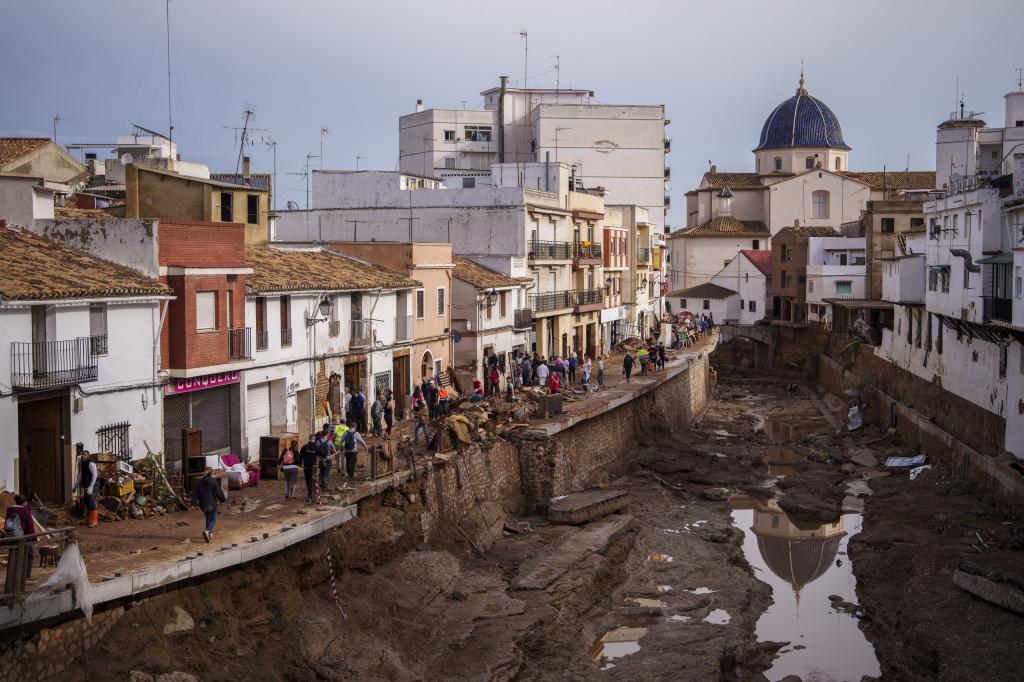In the areas affected by the DANA, forensic doctors have carried out a total of 183 autopsies so far, with 67 of them resulting in the identification of the body, as reported by the Integrated Data Center, which also announced the addition of three forensic dentists to the Valencia Legal Medicine Institute.
When an event with multiple victims, such as this disaster, occurs, the identification of bodies can pose special difficulties, so a protocol governed by Royal Decree 32/2009 is implemented.
"From the body recovery to the autopsy and body identification, everything is done following that protocol that coordinates the actions of forensic doctors and the forensic police," explains Fernando Serrulla, a forensic doctor at the Galicia Legal Medicine Institute, who has been involved in identifying bodies from various events with multiple victims, such as the 11M bombings or the Alvia train accident in Galicia.
"The 11M bombings were the turning point for the implementation of this protocol, which allows for coordinated work," emphasizes Serrulla.
Among other aspects, the protocol establishes, in coordination with the competent court, the creation of the aforementioned Integrated Data Center, which includes an office responsible for gathering data on missing persons (personal description, medical data, tattoos, or the clothing the person was wearing), information that can facilitate the identification process.
"These ante mortem data are compared with the post mortem data obtained during the autopsy or even during the body recovery," explains the forensic doctor.
Fingerprints, the quickest strategy
Generally, the first step usually involves attempting identification through fingerprints, an immutable trait of each individual that allows for identification.
The fingerprints must be compared with those in the police databases, a task mainly carried out by referring to the stored data of a specific person who, based on information gathered from the missing persons or specific circumstances, is suspected of being the individual.
"In some cases, identification can be quick because the person had some form of identification on them that can expedite the search and verification of fingerprints with the databases. Also, through information provided by the family who reported the disappearance, detailing features like a tattoo, a particular scar, etc., which allows for comparison with the stored fingerprints of a specific person," says Eduardo Osuna, professor of Legal and Forensic Medicine at the University of Murcia.
Unfortunately, in other cases, the identification task becomes complicated, for example when fingerprints cannot be obtained or there are no records to compare them with (for instance, in the case of a foreign person).
In cases where fingerprints cannot be used for identification, other methods can be employed, such as dental identification or DNA identification, among others, as explained by Aurelio Luna, professor of Legal and Forensic Medicine at the University of Murcia.
In dental identification, the dental records or a previous dental X-ray of a possible victim can be compared with the dentition of the body, evaluating its peculiarities.
Biological samples are taken from all autopsies in case a DNA test is needed, another possible identification method, Luna adds.
"A DNA sample can be taken from any trace or tissue, a profile that can be compared with a pre-mortem sample taken from a personal item, such as a toothbrush," says Osuna.
Genetic analyses usually require more time and resources than other procedures, but according to data from the Integrated Data Center, the past Saturday saw the first two identifications of individuals through DNA analysis.
Ultimately, the presence of implants, pacemakers, or numbered medical prostheses can also aid in identification tasks.
To expedite the tasks as much as possible, Luna emphasizes that any information that can guide the search is crucial. "Details like the presence of a particular scar, a tattoo, dental records can be very important," he points out.
In Serrulla's opinion, in this case, the vast majority of the bodies "should be able to be identified by fingerprint relatively quickly" because these tissues are well preserved even if they have been submerged for several days.
"All forensic experts are aware of the importance of identifying the bodies for the families, and I know that great efforts are being made to carry it out," he states.
"The professionals carrying out this work are specialized, accredited professionals with sufficient training to ensure that identifications are carried out with the required rigor in these situations," concludes Osuna.
Deaths in disasters and events with multiple victims are considered violent deaths and are subject to judicial investigation, so an autopsy must be performed to clarify the cause of death in all cases.
